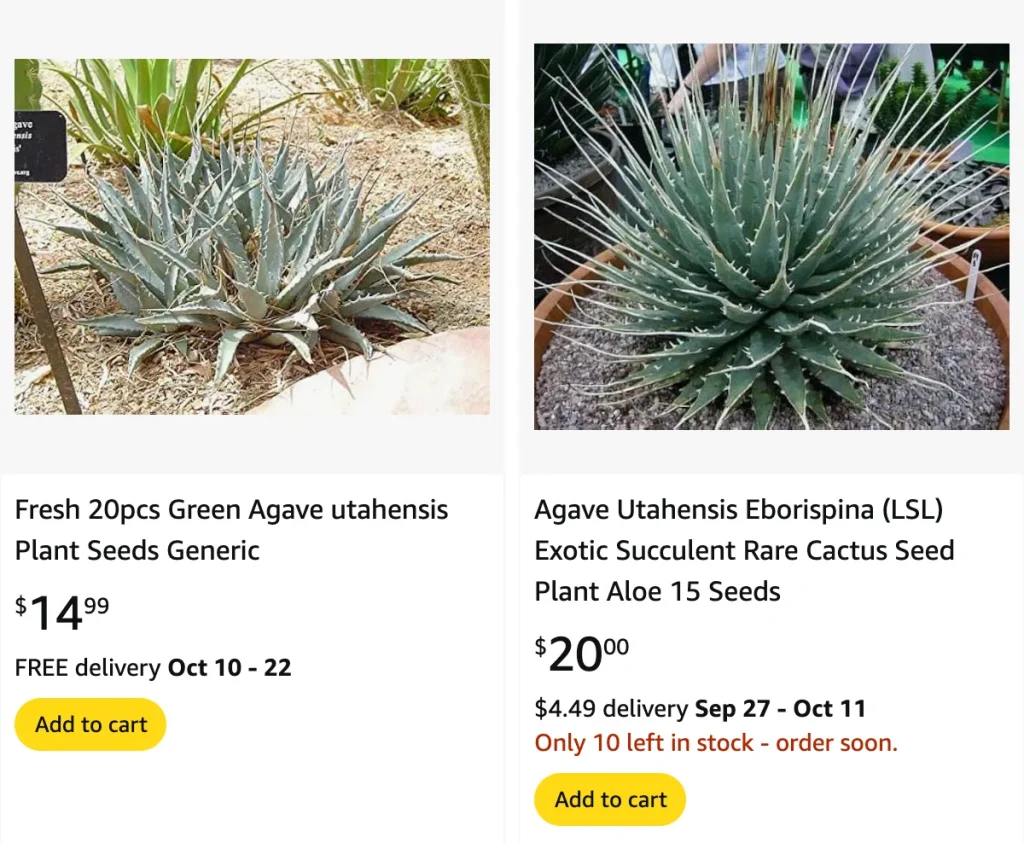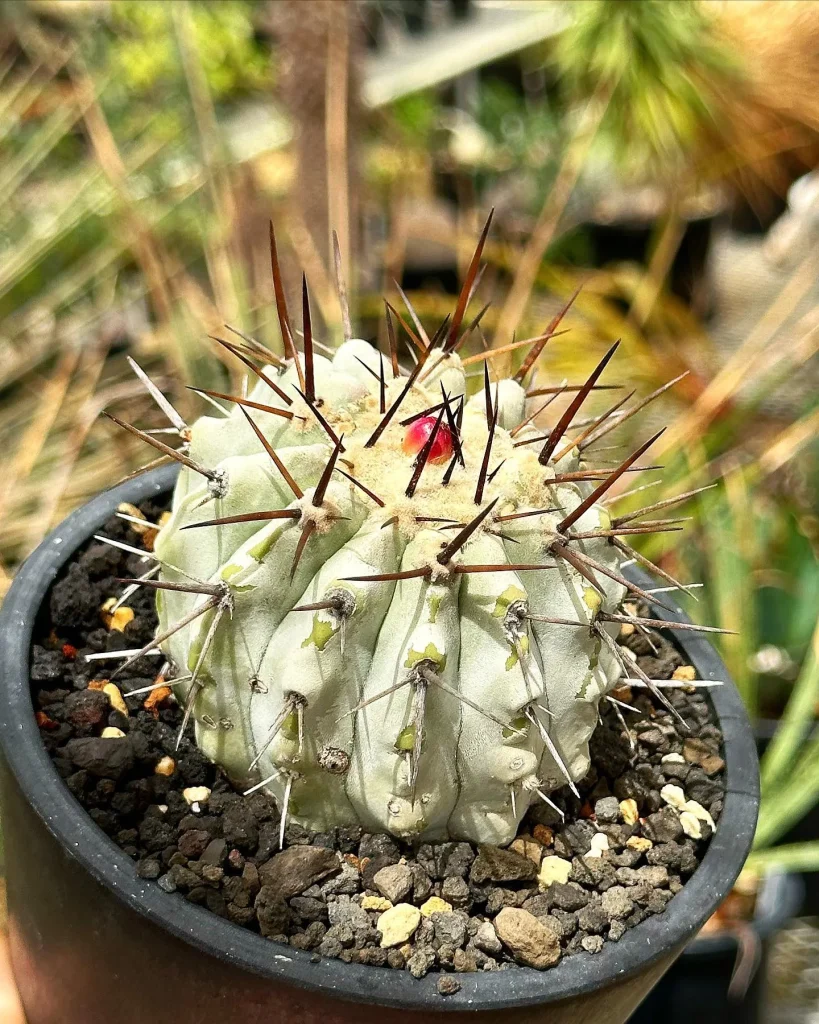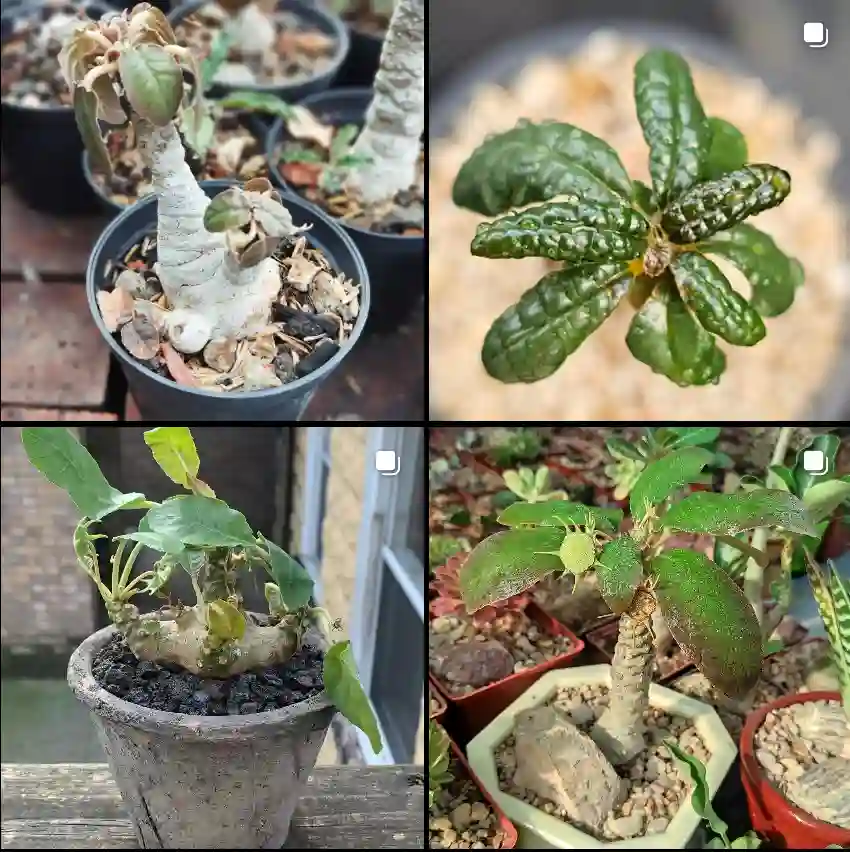
Agave Utahensis: Your Guide to This Stunning Succulent
Agave Utahensis is a captivating succulent native to the arid regions of the southwestern United States. Known for its unique rosette formation and striking blue-green leaves, it’s a favorite among succulent enthusiasts. If you’re considering adding Agave Utahensis to your garden or indoor space, you might have some questions. Here’s a comprehensive guide addressing frequently asked questions about this remarkable plant.
304 Species in Genus Agave
What Is Agave Utahensis?
Agave Utahensis, commonly known as Utah Agave, is a rosette-forming succulent that thrives in dry, rocky environments. It features thick, fleshy leaves with spiny margins and a central terminal spine. This species is well-adapted to desert conditions and can grow up to 2 feet in diameter.
How to Care for Agave Utahensis?
Caring for Agave Utahensis is relatively straightforward, thanks to its hardy nature. Here are some key points:
- Light: It prefers full sun, thriving in bright, direct light. If growing indoors, place it near a south-facing window.
- Water: Water sparingly. Allow the soil to dry out completely between waterings to prevent root rot.
- Soil: Use well-draining soil, such as a cactus mix or a blend of sand and potting soil.
- Temperature: It’s tolerant of high temperatures but should be protected from frost. In cooler climates, consider bringing it indoors during winter.
How to Thin Out an Agave Utahensis?
Over time, Agave Utahensis can produce offsets, or “pups,” that grow around the base of the plant. To maintain its appearance and health, thinning out these pups is essential. Here’s how to do it:
- Timing: The best time to thin out is during the growing season, typically in spring or early summer.
- Tools: Use a clean, sharp knife or pruning shears to cut the offsets from the main plant.
- Process: Gently separate the pups from the main rosette, ensuring you remove any attached roots.
- Aftercare: Allow the separated offsets to callus over for a few days before planting them. This helps prevent rot.
How to Propagate Agave Utahensis?
Propagation is a rewarding way to expand your Agave collection. There are two primary methods:
- Offsets: As mentioned, offsets can be removed and replanted. Ensure they are allowed to dry and callus before planting.
- Seeds: If you prefer seed propagation, sow seeds in a well-draining mix and keep them in a warm, sunny location. Germination can take several weeks.
What to Plant With Agave Utahensis?
Agave Utahensis pairs well with other drought-tolerant plants. Consider these companions for a striking desert garden:
- Succulents: Plants like Echeveria, Sedum, and Aloe complement its look and thrive under similar conditions.
- Cacti: Varieties such as Opuntia or Mammillaria work well in a desert-themed garden.
- Grasses: Ornamental grasses like Blue Fescue add texture and contrast.
Can You Grow Agave Utahensis Indoors?
Yes, Agave Utahensis can be grown indoors, but it requires specific conditions to thrive:
- Light: Ensure it gets plenty of bright, direct sunlight. A south-facing window is ideal.
- Temperature: Keep it in a warm environment with temperatures above 50°F (10°C) during winter.
- Space: Provide ample space for its growth, as it can become quite large.
Is Agave Utahensis Toxic?
Agave Utahensis is not considered highly toxic, but it’s best to handle it with care. The spines can cause irritation if they come into contact with skin or eyes. Keep it away from pets and small children to avoid any potential mishaps.
Benefits of Growing Agave Utahensis
- Low Maintenance: Its drought tolerance makes it a low-maintenance plant, perfect for busy gardeners.
- Aesthetic Appeal: The striking appearance of Agave Utahensis adds a unique touch to any garden or indoor space.
- Eco-Friendly: As a native plant, it supports local ecosystems and requires minimal water.
Common Problems with Agave Utahensis
- Root Rot: Overwatering is the primary cause. Ensure proper drainage and allow the soil to dry out between waterings.
- Pests: Watch for mealybugs and scale insects, which can infest the plant. Treat with insecticidal soap if necessary.
Compare Agave Utahensis with Other Similar Plants
Agave Parryi: Agave Utahensis and Agave Parryi are both rosette-forming succulents, but Agave Parryi typically has more pronounced spines and a different leaf shape.
Agave Americana: Agave Americana, also known as the Century Plant, is larger and has more pronounced spines compared to the more compact Agave Utahensis.
By understanding these aspects of Agave Utahensis, you can better appreciate and care for this fascinating plant. Whether you’re a seasoned gardener or a newbie to succulents, Agave Utahensis offers a unique and beautiful addition to your collection.
If i die, water my plants!



